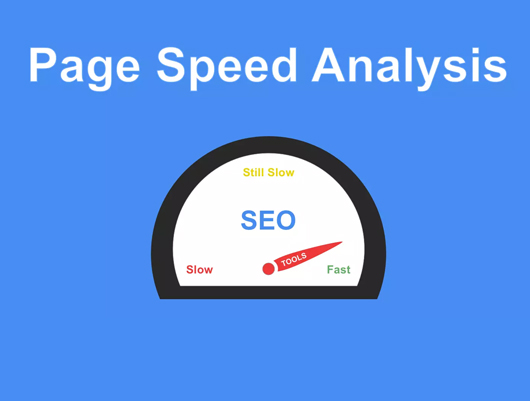Page Speed: How it Impacts your Website Performance
Be it an Old website or a newly Built Website, Pagespeed is an important factor! For a Good User Experience page speed matters. Page speed and optimizing is a must for any website to reduce the loading speed.
What is Page Speed?
Page speed is often confused with site speed. Site speed is the entire page of the web site. But page speed calculates the time it takes to load the page content for the end-user (browser) and it is also known as “Time to First Byte” – How much time it takes to receive the first byte of information from the server.
Page Speed is how fast the contents on your webpage loads. In simple words, the time taken to display the entire content of the particular page.
Free Tools to test your site

A One Second Delay in Page loading speed will make your audience annoyed.
High loading speed can decrease the conversion rate resulting in fewer page views.
Have you ever wondered Why you aren’t getting enough traffic even though you have a beautiful website layout with enough content.
Page Speed is one of the ranking factors considered by Google.
Is your website slower than your coffee maker? This is what you need to do:
COMPRESSION
One of the main factors which affects the Pagespeed is due to images which are of larger sizes. Image Compression is reducing the size of the images in Bytes retaining the same quality of the Image
Images take 1.5 to 3 seconds to load and if optimized well then you can achieve minimum loading speed.
File size of Webp images are much smaller when compared to png without compromising the quality of the image.
REDUCE THE REDIRECTS
Removing the redirects will help in reducing the overhead on the server. In case there are a lot of redirects, the server consumes more time to read all the redirects resulting in more loading speed.
Whenever a page redirects to another page, waiting time also increases. It is found that 15% loss in PageRank is mainly due to 301 redirects. HTTPS migration also loses PageRank.
MINIFY YOUR CODE(CSS, JAVASCRIPT & HTML)
Minifying is the process of removing unused and redundant data without affecting the process of the Browser.
Minify your codes using the following tools:
CSS - CSSNano & csso
Javascript - UglifyJS
HTML - HTMLMinifier
REMOVE JAVASCRIPT
Most of the webpages use jQuery which is a javascript file and this JavaScript file will be the largest file. In case, if you are loading jQuery below the fold then you are not making your users wait. But on the other hand, if you are loading your jQuery above the fold, then you are not following the Pagespeed Guidelines. This causes your users to wait for a longer time.
IMPROVE THE RESPONSE TIME
Reduce the response time to improve your User Experience (UX) and your SEO. Loading speed is one of the main Google ranking factors. Your Brand reputation Your ranking on Google becomes higher if your TTFB is better. Maintaining faster server response time without much fluctuation is important. Your conversion rate can increase by 37% with an improvised response time.
LEVERAGE CACHING
Cache has lots of information stored i.e (CSS stylesheet, images, js, fonts and much more). If the user revisits your website, he/she doesn’t need to wait for the entire website to load. Cached details are used to display the content with minimal time used than the actual load time. It’s achieved through setting expiration time for different file formats in the “.htaccess” file. And now this helps the data cacheable for a certain period of time (Preferably a year).
USE CDN (Content Distribution Network)
In Order to increase your website speed, opting for Content Delivery Network(CDN) is the best choice. CDN can improve the loading speed of your website and it can handle contents such as images, CSS, Videos, JS and music efficiently. CDN mainly works on the principle of File caching so that it delivers your files faster to the users without having to make them wait for a long time. CDN also secures your data from cyber attacks.
OPTIMIZE YOUR IMAGES
Images are the main elements of any website and usage of heavy images takes up more disk space of the server. To increase the page speed and make the page load faster you should have a well-optimized images. Resizing and compression of images can reduce the loading time. Choose the right image format and compress images without losing it’s quality. Use PNG, JPEG and GIF files where it’s needed.
Final Thoughts
Page speed is one of the important factors when it comes to optimizing your website. If you want your users to visit all of your content and navigate easily then optimizing your page speed is essential. In general, your audience has a very less attention span and if your website takes more time to load then there will be an increase in bounce rate.
Reference
https://developers.google.com/speed/docs/insights/MinifyResources


